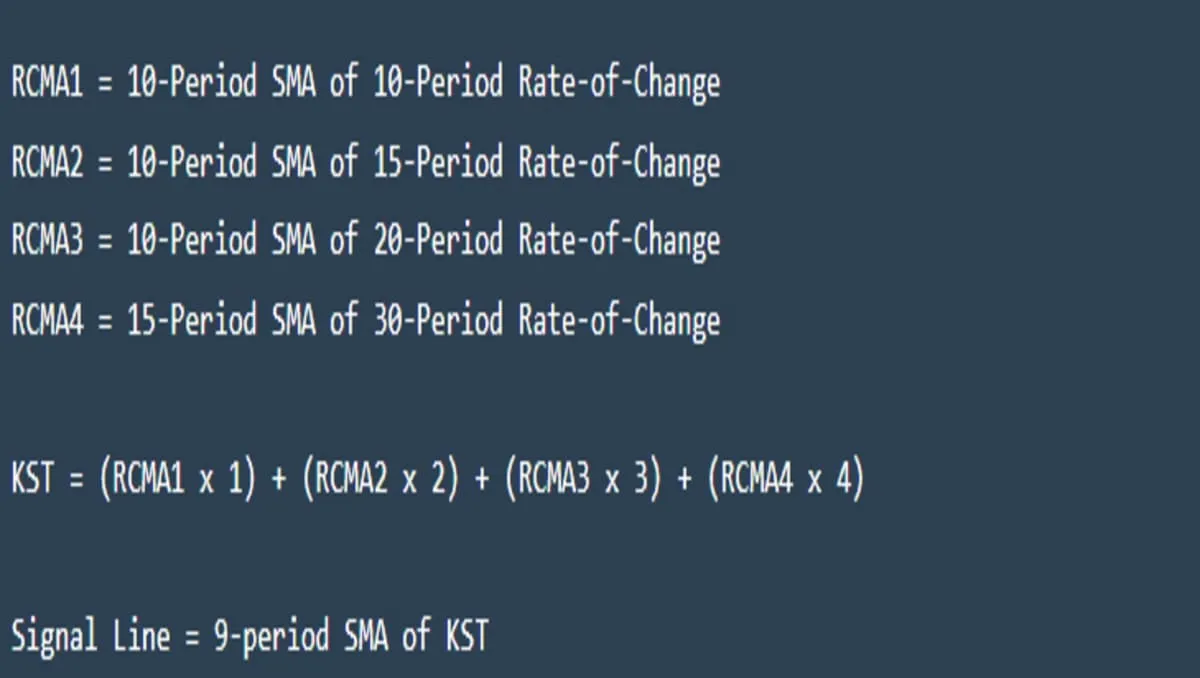Tuesday Feb 13 2024 08:07

10 min

Momentum trading is a popular strategy among traders, as it allows them to take advantage of the market's short-term price movements.
By identifying stocks that are gaining momentum, traders can enter and exit positions to maximise profits.
One of the most effective tools for momentum trading is the Know Sure Thing (KST) indicator.
The Know Sure Thing (KST) indicator is a powerful momentum oscillator that helps traders identify the market's overall trend and potential reversals. Developed by Martin Pring, the KST indicator combines a series of moving averages to generate reliable signals.
Unlike other momentum indicators that only focus on price, the KST takes into account both price and time, providing a more comprehensive view of market dynamics.

The formula for calculating the KST involves several steps:
The typical timeframes and weightings are as follows:
The formula can be expressed as:

Finally, a signal line is often applied to the KST, which is typically a 9-period moving average of the KST. Crossovers between the KST and its signal line can be used as buy or sell signals.
The KST indicator provides valuable signals for both entry and exit points in momentum trading. When the KST line crosses above the zero line, it signals a potential buying opportunity, indicating bullish momentum.
Conversely, when the KST line crosses below the zero line, it suggests a potential selling opportunity, indicating bearish momentum. However, it's important to note that the KST is not a standalone indicator and should be used in conjunction with other technical analysis tools to confirm signals.
Traders can further enhance their interpretation of KST signals by looking for divergences. A bullish divergence occurs when the price makes a lower low, but the KST makes a higher low, indicating a potential trend reversal to the upside.
On the other hand, a bearish divergence occurs when the price makes a higher high, but the KST makes a lower high, suggesting a potential trend reversal to the downside. These divergences can serve as strong confirmation signals when combined with other technical indicators.
While the KST indicator is a powerful tool on its own, combining it with other indicators can further enhance its effectiveness. One common approach is to use moving averages in conjunction with the KST.
By adding a longer-term moving average to the chart, traders can confirm the overall trend before taking any positions based on KST signals. For example, if the KST signal is bullish and the price is above a long-term moving average, it provides a stronger buy signal.
Another useful indicator to combine with the KST is the Relative Strength Index (RSI). The RSI measures the strength and speed of price movements and can help confirm or filter KST signals. If both the KST and RSI indicate bullish momentum, it strengthens the case for entering a long position.
Conversely, if both indicators suggest bearish momentum, it reinforces the decision to exit or short a position. Experimenting with different combinations of indicators can help traders find the most effective setup for their trading style.
Successfully mastering momentum trading with the KST indicator requires more than just understanding its formula and interpreting signals. Here are some tips to help you make the most of this powerful tool:
To better understand the practical application of the KST indicator, let's explore a couple of real-life examples.
These examples illustrate how the KST indicator can help traders identify potential entry and exit points, maximizing profits in both bullish and bearish market conditions.
To further enhance your knowledge and practice with the KST indicator, here are some valuable resources:

Mastering momentum trading with the Know Sure Thing (KST) indicator requires a solid understanding of its formula, interpretation of signals, and effective combination with other technical analysis tools.
By following the tips provided, avoiding common mistakes, and continually learning and practising, you can harness the power of the KST indicator to improve your momentum trading strategy.
Become a member of markets.com and access a cutting-edge trading platform.
“When considering “CFDs” for trading and price predictions, remember that trading CFDs involves a significant risk and could result in capital loss. Past performance is not indicative of any future results. This information is provided for informative purposes only and should not be considered investment advice.”